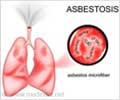According to a team of researchers an expression pattern of certain microRNA’s heve been found that can predict tumour aggressiveness in lunch cancer patients.
According to a team of researchers an expression pattern of certain microRNA’s heve been found that can predict tumour aggressiveness in lunch cancer patients.
The analysis of these findings indicates that miRNAs may represent a new class of diagnostic and prognostic tools for lung cancer.The Ohio State University Comprehensive Cancer Centre, Columbus, Ohio; the Jikei University School of Medicine, Tokyo, Japan; National Cancer Centre Research Institute, Tokyo, Japan; and the Centre for Cancer Research at the National Cancer Institute (NCI), which is part of the National Institutes of Health have collaborated in the study.
As the name suggests, micro or miRNAs are small segments of genetic material called ribonucleic acid, or RNA, and are thought to control gene ex-pression.
Two miRNAs — has-mir-155 and has-let-7a-2 — have been identified that could be used as prognostic indicators in patients with adenocarcinoma, a malignancy of the mucous glands in the lungs.
A tumour with an overex-pression of has-mir-155 or reduced ex-pression of has-let-7a-2 would indicate the need for aggressive chemotherapy or radiation treatments.
According to Curtis Harris, M.D., chief of the Laboratory of Human Carcinogenesis at NCI and co-leader of this study, “This study is significant because it provides another tool for studying prognosis that is independent of tumour stage. Following surgery, 50 to 60 percent of patients with stage I lung cancer will develop metastatic disease within five years. This may indicate that there are micrometastases that have not been detected by imaging, scanning or pathology. In the future, we can use miRNAs and other biological predictors to select patients who may need more aggressive treatment versus those who may not. Additional studies confirming these results are the next step before incorporating miRNA analysis into routine clinical practice.”
Advertisement
In the words of Carlo Croce, M.D., chair of Molecular Virology, Immunology and Medical Genetics at The Ohio State University and study co-leader, “This is promising research and is the first study to link these miRNAs to lung cancer. We are proposing that has-mir-155 may be acting like an oncogene in lung cancer. Oncogenes control cell growth and, when mutated, can contribute to abnormal cell growth. “miRNAs control the ex-pression of a number of genes so if the miRNA is altered, this could lead to the alteration of a number of genes affecting malignant tumor growth. Although these results are encouraging, further testing is required to demonstrate the validity of using these markers for predicting patient outcomes.”
Advertisement











